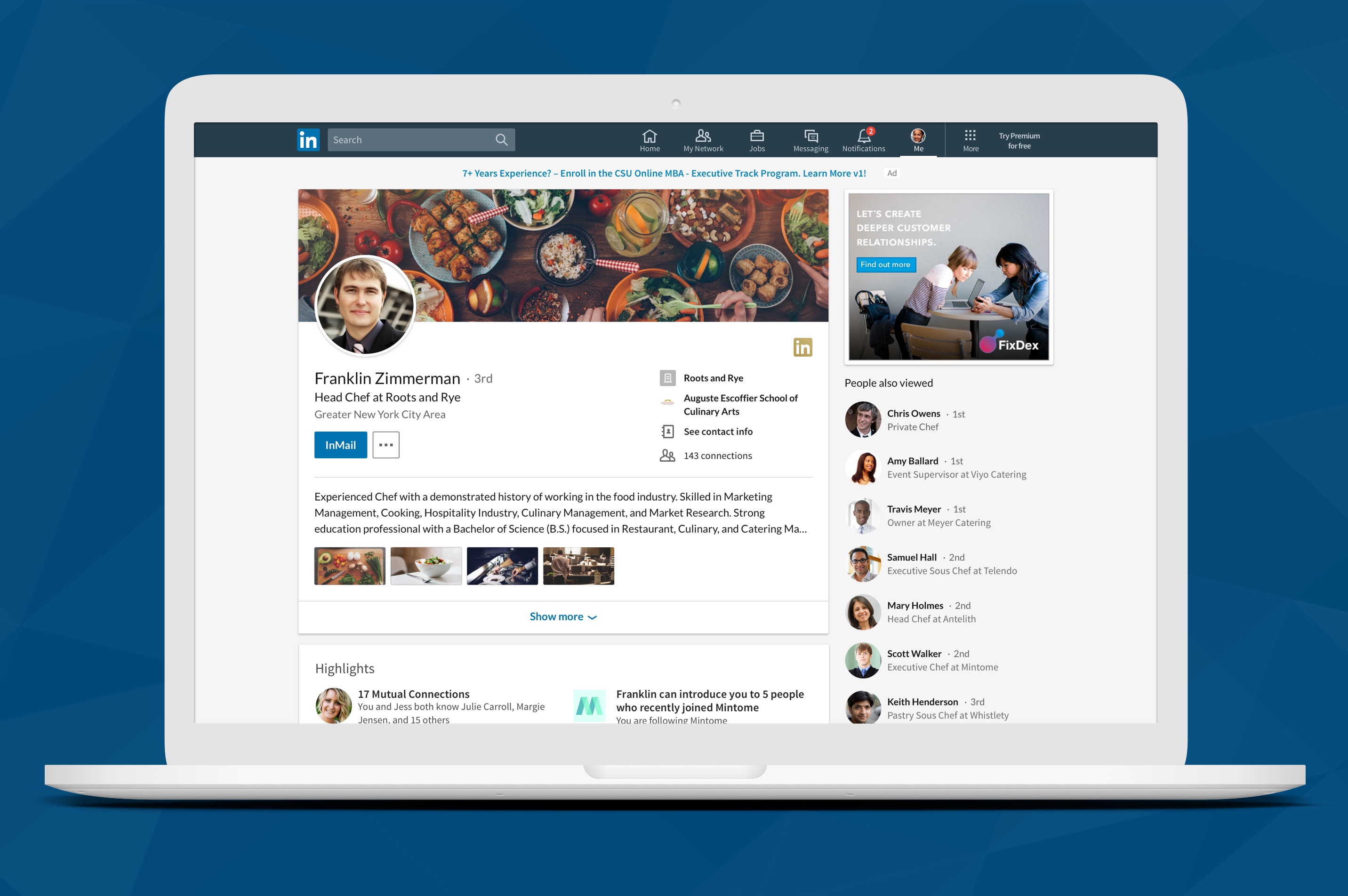10 Tips to improve your LinkedIn Profile
03 July
We all still think of our CV as the best tool for selling ourselves when we’re job hunting, but prospective employers will quite probably look at your LinkedIn profile too. You want your profile to grab the eyes of the recruiter and keep their attention. Here are some handy tips to help you create a strong online presence in order to get noticed in today’s job market.

1. Make a Powerful First Impression
Your photograph and headline are the two most prominent details on your profile that encourage someone to click to discover more about you, or not. Make sure you use an appropriate photo – ideally, a headshot of you looking smartly presented and professional. Don’t use a photo taken at a party or on holiday, or a posed selfie. Your headline should stand out to set you apart from the profiles of your peers. Don’t make it too long – it needs to grab the recruiter’s attention in the first few words; also some screen views cut the headline down to three or four words, so don’t waste the start of yours using phrases like, ‘I am currently focusing on…’ Another great way to stand out and set your profile apart from that of your peers is to upload a background photo as currently only a small percentage of users have them! Think about what message the image will give about you or your business – you want it to reflect whatever it is that you are trying to promote on LinkedIn, such as the brand logo for your company, a photo that shares your or your company’s key achievements or showcasing your work if you’re a designer, photographer, writer or in a creative industry.
2. Avoid cliché words
Using words like ‘passionate, hardworking and focused’ doesn’t differentiate you from your peers and may alienate you from the recruiter. It is better to be specific. Talk the reader through your particular achievements, qualifications and experience using your normal vocabulary and writing style and use facts and figures where you can. Make sure your profile paints you as an approachable person who is going to fit well into the company culture.
3. Boost Your Profile’s Visibility
Knowing where to strategically place keywords will help to get your profile in front of more recruiters. Think about which words people in your field are likely to search for and include those words in your headline and summary sections. Also, make sure you have something written in the ‘Current Position’ field; recruiters often search by current position to find candidates.
If your current job title doesn’t include the keywords for the role you are looking for, then it’s a good idea to try and include them. For example, if your job is ‘Creative Designer’ but you are looking for a marketing role, you could add ‘ – Marketing’ after your job title to ensure you appear in marketing-related searches.
4. Get Creative
If you produced a video for your degree or have photos from voluntary work you have undertaken, put them on your LinkedIn profile. These are things you can’t put onto a CV and it’s good to give a prospective recruiter an insight into your personality as well as your work self.
5. Be Specific
Include relevant quantifiable achievements in your summary. For instance, instead of saying “I am a successful HR assistant”, write “I increased productivity by 25% in 2019 by implementing a new staff training initiative.”
6. Be Proactive
Once your LinkedIn profile is updated and improved, join relevant groups and interact with other LinkedIn users – like, comment on and share others’ posts and industry-related articles; update your status regularly with professional comments and if you feel confident to do so, develop this further by writing lengthier posts.
7. Keep It Updated
Set a regular reminder to check your profile and update it with your latest achievements and endorsements. Ask someone you’ve worked closely with for a recommendation – they become the best references you could ask for.
8. Get to Know How LinkedIn Works
There are lots of privacy options in the ‘Settings and Privacy’ section that you should familiarise yourself with, such as how your profile will be viewed by those who aren’t connections and whether or not you want your entire network to be alerted when you make small changes to your profile. Take a look at other people’s profiles and get to know what works and what doesn’t from the perspective of a viewer and if certain things about their profile engaged you or they had a headline that caught your eye, then adapt elements of what they’ve done for your own profile.
9. Make Sure You Can Be Found
It’s a great idea to get a custom URL so that you can be found easily. You can opt to use just your name if it’s available (www.linkedin.com/joebloggs), or your name with a hyphen or another combination. Click on ‘Edit your public profile’ under ‘Settings and Privacy’ and you should see an option to ‘Edit URL’.
Make sure the contact details you have listed are current and also include other social media information such as your Twitter handle.
10. Keep things concise.
While it’s important to include details of past jobs and list your achievements in the roles, don’t be tempted to include too much information. Three or four bullet points under each job listing are enough to inform but not overwhelm.










